Translated from the Spanish by the WHSRN Executive Office
H5N1 avian influenza is a threat to birds, with the added concern of the potential to spread the virus during migration. This year the focus of the Central American Waterbird Census (CAWC) was to document the presence of dead and/or sick birds due to avian influenza, in addition to documenting diversity, abundance and habitat status as has been done for the past 10 years. Even though almost all Central American countries have issued health alerts due to the confirmation of the increase in cases of avian influenza, only one dead individual, a Magnificent Frigatebird (Fregata manificens) was reported in Belize during the CAWC. The cause of death for this bird is unknown.
Survey Efforts
The CAWC is conducted each year between January 15 and February 15. A total of 145 sites and 230 sampling units were surveyed in eight countries from southern Mexico to Panama (Map 1). In the Caribbean, only 10 sites were surveyed in Belize and Honduras. It is important to note that most of the sites where avian influenza has been reported are in the Caribbean. Among the habitats sampled were marine-coastal wetlands (77), inland wetlands (52), and human-made wetlands (58). These categories of habitat create a mosaic of ecosystems that includes intertidal flats, estuaries, intertidal forested wetlands, aquaculture ponds, and salt farms areas.
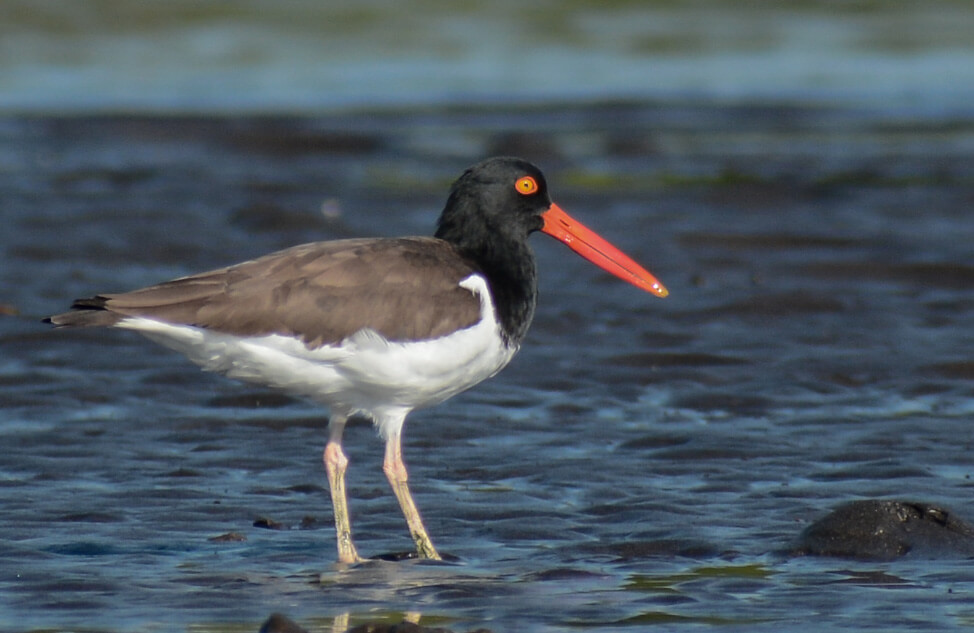
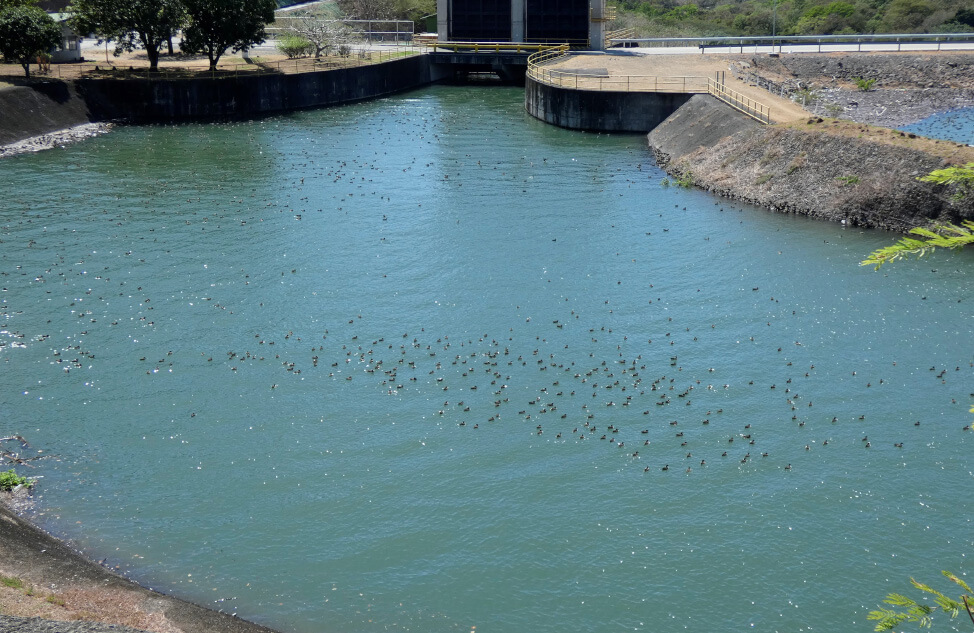
Left: American Oystercatcher (Haematopus palliatus) in Guatemala. Photo: James Gorriz. Right: Flock of Blue-winged Teal (Spatula discors) during the census in Costa Rica. Photo: Luis Sandoval.
CAWC 2023 Results
One hundred and twenty-one species of waterbirds were identified, totaling 226,249 individuals. Fourteen species represent 70% of the individuals counted in the region. Seven species of these are waterbirds (94,126 individuals) and five species are shorebirds (63,342).
The most abundant species in Central America and southern Mexico was the Blue-winged Teal (Spatula discors) with 41,418 individuals, followed by the Western Sandpiper (Calidris mauri) with 23,081 individuals and Black-bellied Whistling Duck (Dendrocygna autumnalis) with 15,495 individuals. Sixty-one species of migratory birds were documented, representing 68% of the number of individuals counted this CAWC season, totaling 154,849 individuals. In terms of biogeographic populations, a total of 11 species represents significant portions of their populations, for example, more than 50% of the Wilson’s Plover (Charadrius wilsonia) biogeographic population was recorded, 11.28% of the Yellow-legged Heron (Egretta thula) and 7.4% of the Caspian Tern (Hydroprogne caspia). The full 2023 report can be downloaded at this link.
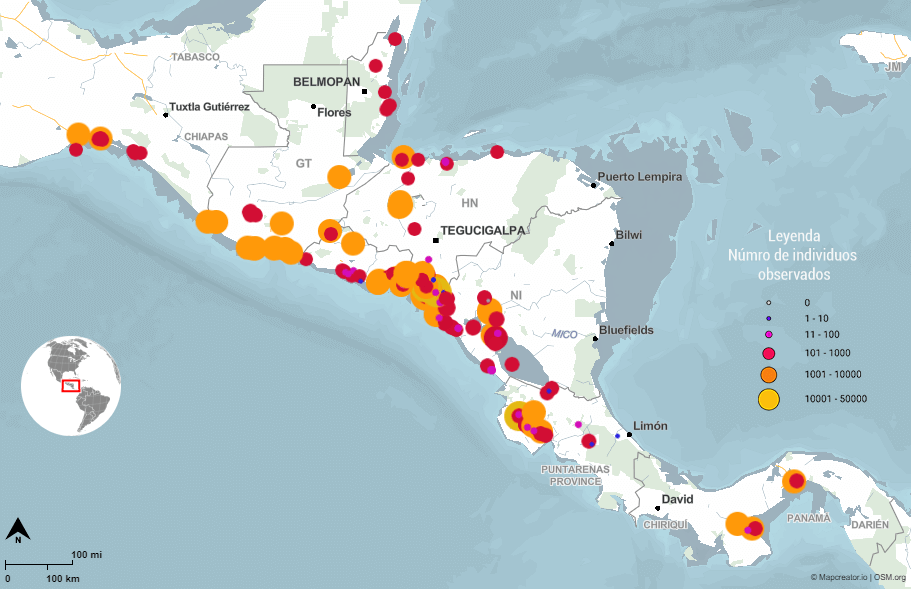
Map of number of individuals at each site of the Central American Waterbird Census.
Volunteers
The CAWC is implemented in each country thanks to volunteer organizations, many who have participated in the counts year after year. In 2023, 187 volunteers participated across each of the different countries.
To participate in the next counts contact the national coordinators in each country:
- Mexico: Eric Molina -ProNatura Sur A.C. – ericmolina@pronatura-sur.org and Claudia Macias Caballero cmacias@pronatura-sur.org
- Guatemala: Bianca Bosarreyes, latticeb@hotmail.com Fundación para el Ecodesarrollo y la Conservación (Fundaeco) and Alexis Cerezo a.cerezo@fundaeco.org.gt
- Belize: Kevin Tsao. Belize Audubon Society rmoterra@belizeaudubon.org
- El Salvador: Vicky Galán and Marta Quetzada. Fundación Ecológica SalvaNATURA – vicky_galan08@yahoo.com and marta.quezada@salvanatura.org
- Honduras: Francisco Dubon and John van Dort. Aves Honduras |Asociación Hondureña de Ornitología -franciscojavierdubon@gmail.com and john.vandort@gmail.com
- Nicaragua: Michael Gutiérrez and Yoleydi Mejía. Quetzalli Nicaragua S.A. – carriongutierrezsebastian@gmail.com and
- info@grupoquetzalli.com
- Costa Rica: Luis Sandoval. Unión de Ornitólogos de Costa Rica (UOCR) biosandoval@gmail.com
- Panama: Esther Carty and Rosabel Miró. Panama Audubon Society. scarty@audubonpanama.org y dir_ejecutiva@audubonpanama.org
- Regional Coordination. Manomet Salvadora Morales and Arne Lesterhuis. smorales@manomet.org and alesterhuis@manomet.org
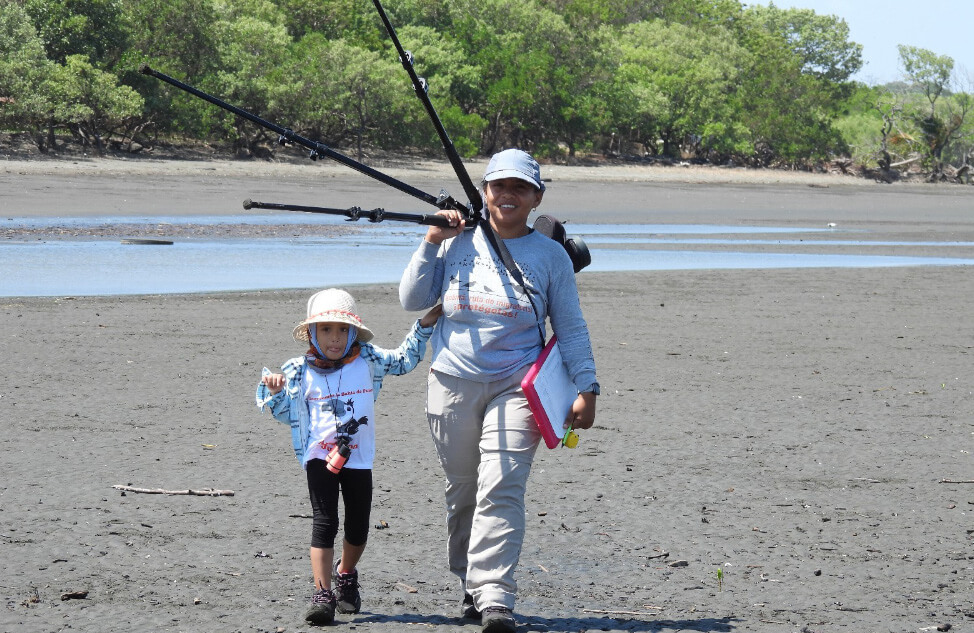
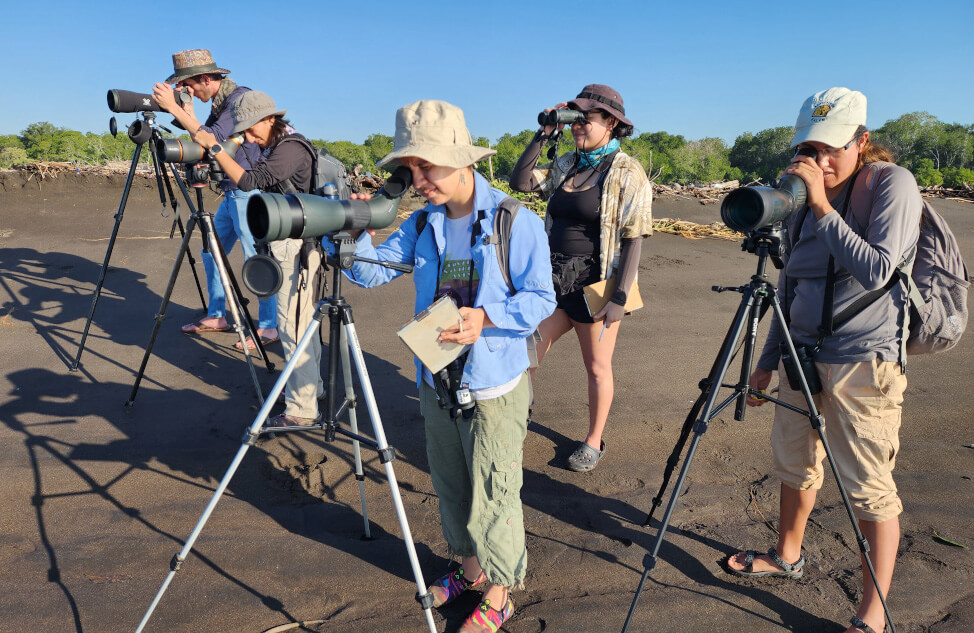
Left: Ester Carty, Coordinator of CAWC for Panama on Playa El Reten. Photo: Yennifer Diaz. Right: Volunteers observe birds during the CAWC in Guatemala. Photo: Gabriel Valle.
Counts were possible thanks to support from Environment and Climate Change Canada and a private donor to Manomet.
Cover Photo: American White Pelicans (Pelecanus erythrorhynchos) in Guatemala. Foto: Bianca Bosarreyes.






